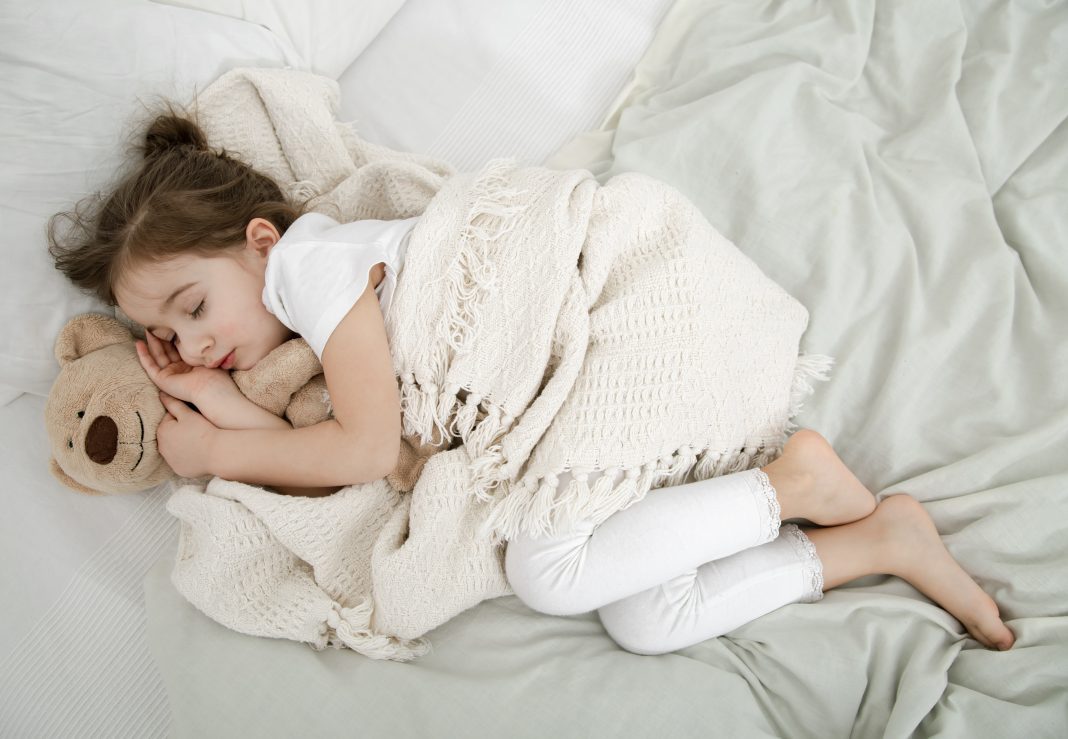
Sleep is an integral part of your overall health, and it’s especially important for children. Although you might associate insomnia with adulthood, there are many children who suffer from insomnia. And unfortunately, if your children are struggling to sleep, it means you’re likely to struggle to get some rest, too. Fortunately, there are a few things you can do to help your kids—and your household. Here’s what you need to know:
Keep a Cool Room
If you’ve ever struggled to sleep well in the summer heat, you understand how important it is to keep your body cool at night. Your child’s melatonin levels help to regulate the desirable body temperature necessary to sleep. Research has shown that as your body cools down at night it becomes better prepared for sleep.
Maintaining a cool temperature in your room can speed up the process of cooling your body. You should also pay close attention to the pajamas you’re putting your children to bed with—if you burden them with thick pajamas, they’ll have more difficulty falling asleep. You should also consider a cooling mattress from a company like Muse Sleep (you can learn more here: https://musesleep.com/pages/cooling-mattresses).
No Screens Before Bed
These days, children rely heavily on screen-based entertainment, whether it’s games, televisions, or tablet TikTok time. Research has shown that the blue light that comes from computer monitors, phones, and televisions stalls the production of melatonin, which is necessary to ease the body to sleep.
You may think that allowing your children to use these devices before bed can help lull them to sleep, but it can have the opposite reaction. If your children are on their devices for entertainment, it can keep them awake an extra hour on average. Get into the habit of limiting screen time before bed, allowing your children to give their minds a rest when they need it most.
Create a Comfortable Environment
Just like adults, children can suffer from a lack of sleep if they aren’t in a comfortable environment. A sleep-inducing environment can also eliminate distractions in a room. Items you might incorporate include soft blankets, sheets, and pillows, an air diffuser, room darkening shades (especially useful if you live in a home or apartment where street lights shine in through the windows), and maybe even calming scents like lavender.
Consistent Bedtime & Wake-up Time
The circadian rhythm is a unique part of our physiological processes; our internal biological clock lets us know when we should be up and active or tired and sleepy. A set bedtime and wake up time can help stimulate that internal clock, and it works well no matter what type of habits your child has (for example, whether they’re an early riser or a night owl). This is especially important because children require more sleep than adults. The recommended sleep for children is between 9 and 11 hours.
Incorporate White Noise
White and pink noise have soothing qualities that can help lull your children to sleep. White noise is composed of evenly spaced sounds that are spread across frequencies, while pink noise has softer tones on the high end of the frequency and higher noise on the low end. Examples of this type of noise include the sound of television static, rain drops, or soft wind whistling in a forest. You can find plenty of white noise machines online, but there are also playlists on music streaming devices like Spotify and iTunes.
Talk to a Pediatrician
If you’ve gone through all the motions to make sure your child has the best sleep possible and notice that they still have problems falling asleep, it may be time to talk to a pediatrician. It’s possible that your child has a sleep disorder that prevents them from getting a full night of rest, time after time. They might suffer from movement disorders, obstructive sleep apnea, parasomnias, or even a mental health disorder. Talking to a pediatrician can help give you peace of mind, and they’ll provide you with recommendations that help you get to the root of the issue.




















